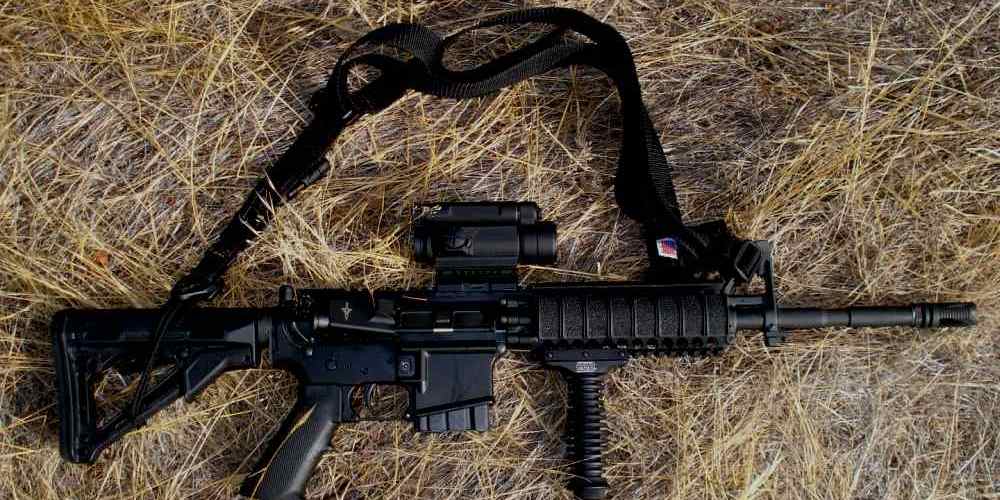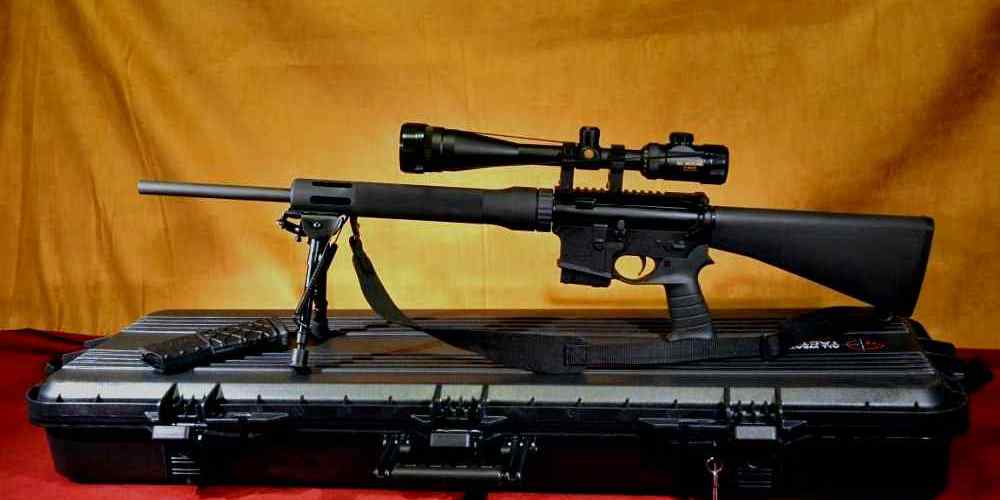“Master your AR-15 with our comprehensive field stripping and reassembly guide.”
Proper Tools Needed for AR-15 Field Stripping
When it comes to owning an AR-15 rifle, it’s important to know how to properly field strip and reassemble it. This process is essential for cleaning, maintenance, and troubleshooting. In this guide, we will walk you through the steps of field stripping and reassembly of an AR-15.
Before we dive into the actual process, it’s important to gather the proper tools needed for AR-15 field stripping. These tools include a flathead screwdriver, a punch set, a cleaning rod, a bore brush, a cleaning solvent, lubricating oil, and a cleaning cloth. Having these tools on hand will make the process much smoother and more efficient.
Once you have gathered all the necessary tools, you can begin the field stripping process. Start by ensuring that the rifle is unloaded and the safety is engaged. Remove the magazine and visually inspect the chamber to ensure there are no rounds present. Once you have confirmed that the rifle is clear, you can proceed with field stripping.
To begin, push out the takedown pin located above the trigger guard. This will allow you to separate the upper and lower receivers of the rifle. Next, pull the charging handle to the rear and remove the bolt carrier group from the upper receiver. You can then remove the charging handle from the upper receiver.
With the upper receiver disassembled, you can now focus on the lower receiver. Push out the pivot pin located above the magazine well to separate the upper and lower receivers completely. You can then remove the buffer and buffer spring from the lower receiver.
Now that you have successfully field stripped your AR-15, it’s time to move on to reassembly. Start by inserting the buffer and buffer spring back into the lower receiver. Next, align the upper and lower receivers and push the pivot pin back into place. Make sure it is fully seated and secure.
With the lower receiver reassembled, you can now focus on the upper receiver. Insert the charging handle back into the upper receiver and then reinsert the bolt carrier group. Make sure everything is properly aligned and seated before moving on.
Once the upper and lower receivers are reconnected, push the takedown pin back into place above the trigger guard. Ensure that it is fully seated and secure. Your AR-15 is now fully reassembled and ready for use.

In conclusion, knowing how to properly field strip and reassemble your AR-15 rifle is essential for maintenance and troubleshooting. By following the steps outlined in this guide and having the proper tools on hand, you can easily perform these tasks with confidence. Remember to always handle your firearm safely and responsibly.
Step-by-Step Guide to Field Stripping an AR-15
If you own an AR-15 rifle, it’s important to know how to properly field strip and reassemble it. Field stripping your AR-15 allows you to clean and maintain your firearm, ensuring its reliability and longevity. In this step-by-step guide, we will walk you through the process of field stripping and reassembling your AR-15.
To begin, make sure your AR-15 is unloaded and the safety is engaged. Remove the magazine from the rifle and visually inspect the chamber to ensure there is no ammunition present. Once you have confirmed the rifle is clear, you can proceed with field stripping.
The first step in field stripping your AR-15 is to push out the takedown pin located above the pistol grip. Use a punch or a small tool to push the pin out from the left side of the rifle. Once the pin is removed, you can separate the upper and lower receivers by pulling them apart.
Next, remove the charging handle by pulling it out of the upper receiver. Then, push the bolt carrier group (BCG) forward and out of the upper receiver. Set the charging handle and BCG aside for cleaning.
With the upper receiver now separated from the lower receiver, you can remove the buffer and buffer spring from the buffer tube. Simply push down on the buffer retaining pin and slide the buffer and spring out of the tube.
Now that the rifle is fully field stripped, you can begin cleaning and inspecting each component. Use a cleaning solvent and a brush to scrub away any carbon buildup on the BCG, charging handle, and other parts. Wipe down each component with a clean cloth to remove any excess solvent.
Once you have cleaned and inspected all the components, it’s time to reassemble your AR-15. Start by inserting the buffer and buffer spring back into the buffer tube. Make sure the buffer retaining pin is properly seated to hold the buffer in place.
Next, insert the BCG back into the upper receiver, making sure the bolt is fully forward. Slide the charging handle back into the upper receiver until it locks into place.
Now, align the upper and lower receivers and push them together until the takedown pin snaps back into place. Your AR-15 is now fully reassembled and ready for use.
In conclusion, field stripping and reassembling your AR-15 is a simple process that every gun owner should know how to do. By regularly cleaning and maintaining your rifle, you can ensure its reliability and performance. Remember to always follow proper safety procedures when handling firearms and never skip any steps in the field stripping process. With practice, you will become more comfortable with maintaining your AR-15 and be able to enjoy it for years to come.
Tips for Cleaning and Maintaining Your AR-15
If you own an AR-15 rifle, it’s important to regularly clean and maintain it to ensure optimal performance and longevity. One of the key steps in maintaining your AR-15 is field stripping and reassembly. This process may seem daunting at first, but with practice and the right guidance, you’ll become proficient in no time.
To begin, make sure your AR-15 is unloaded and the magazine is removed. Safety should always be your top priority when handling firearms. Once you’ve confirmed the rifle is clear, you can start the field stripping process. Start by pushing out the takedown and pivot pins located on the lower receiver. These pins hold the upper and lower receivers together. Use a punch or a similar tool to push them out, being careful not to scratch or damage the rifle.
After removing the pins, separate the upper and lower receivers. Next, remove the charging handle and bolt carrier group from the upper receiver. To do this, pull the charging handle to the rear of the upper receiver and then lift out the bolt carrier group. Set these components aside for cleaning.
With the upper receiver now empty, you can focus on cleaning the barrel and chamber. Use a bore brush and cleaning rod to scrub the barrel, paying close attention to any fouling or debris. Once the barrel is clean, run a patch soaked in solvent through it to remove any remaining residue. Wipe down the exterior of the upper receiver with a clean cloth and solvent to remove any dirt or grime.
Moving on to the lower receiver, use a brush and solvent to clean out any debris or fouling. Pay special attention to the trigger group and other moving parts. Wipe down the lower receiver with a clean cloth to remove any excess solvent.
Once both the upper and lower receivers are clean, it’s time to reassemble your AR-15. Start by inserting the bolt carrier group back into the upper receiver, making sure it is properly aligned. Next, reinsert the charging handle and slide it back into place. Align the upper and lower receivers and insert the takedown and pivot pins to secure them together.
With the rifle reassembled, perform a function check to ensure everything is working properly. Check the safety selector, trigger, and bolt carrier group to make sure they are functioning as they should. If everything checks out, your AR-15 is now ready for use.
Regularly field stripping and cleaning your AR-15 is essential for maintaining its reliability and accuracy. By following these steps and practicing good firearm maintenance habits, you can ensure your rifle will perform at its best for years to come. Remember to always follow safety protocols when handling firearms and seek professional help if you are unsure about any aspect of maintaining your AR-15. With practice and dedication, you’ll become a pro at field stripping and reassembly in no time.
Common Mistakes to Avoid During Reassembly
When it comes to reassembling an AR-15 after field stripping, there are a few common mistakes that many gun owners make. These mistakes can lead to frustration, wasted time, and even potential damage to your firearm. In this guide, we will discuss some of the most common mistakes to avoid during the reassembly process to ensure that your AR-15 is put back together correctly and functions properly.
One of the most common mistakes that people make when reassembling an AR-15 is not properly aligning the parts before attempting to put them back together. This can lead to parts not fitting together correctly, which can cause malfunctions or even damage to the firearm. Before you start reassembling your AR-15, take the time to carefully align the parts and make sure that everything is in the correct position.
Another common mistake that people make during reassembly is not properly lubricating the moving parts of the firearm. Proper lubrication is essential for ensuring that your AR-15 functions smoothly and reliably. Before you put your firearm back together, make sure to apply a thin layer of lubricant to all of the moving parts, including the bolt carrier group, charging handle, and buffer spring.
It is also important to pay attention to the orientation of the parts when reassembling your AR-15. Some parts, such as the bolt carrier group, can only be installed in one direction. If you try to force a part into place in the wrong orientation, you can cause damage to the firearm. Take the time to carefully read the manufacturer’s instructions and make sure that you are installing each part correctly.
Another common mistake that people make during reassembly is not properly tightening the screws and pins that hold the firearm together. If these screws and pins are not tightened securely, they can come loose during use, which can cause malfunctions or even damage to the firearm. Make sure to use the correct tools and torque specifications when tightening the screws and pins to ensure that they are secure.
One final common mistake to avoid during reassembly is rushing through the process. Reassembling an AR-15 takes time and patience, and rushing through it can lead to mistakes and potential damage to your firearm. Take your time, follow the manufacturer’s instructions carefully, and double-check your work to ensure that everything is put back together correctly.
In conclusion, there are several common mistakes that people make when reassembling an AR-15 after field stripping. By taking the time to properly align the parts, lubricate the moving parts, pay attention to the orientation of the parts, tighten the screws and pins securely, and avoid rushing through the process, you can ensure that your AR-15 is put back together correctly and functions properly. By following these tips, you can avoid common reassembly mistakes and enjoy a smoothly functioning firearm.
Advanced Techniques for AR-15 Field Stripping and Reassembly
Field stripping and reassembly of an AR-15 rifle can seem like a daunting task for beginners, but with practice and patience, it can become second nature. In this guide, we will walk you through the advanced techniques for field stripping and reassembly of an AR-15, ensuring that you can confidently disassemble and reassemble your rifle with ease.
To begin, make sure your AR-15 is unloaded and the safety is engaged before starting the field stripping process. Start by removing the rear takedown pin, followed by the front takedown pin. Once the pins are removed, separate the upper and lower receivers by pulling them apart gently.
Next, remove the charging handle and bolt carrier group from the upper receiver. To do this, pull the charging handle to the rear of the upper receiver and then remove the bolt carrier group by pulling it out of the receiver. Set these components aside for cleaning and inspection.
With the upper receiver now empty, remove the buffer and buffer spring from the buffer tube. To do this, press the buffer retainer down and remove the buffer and spring from the tube. Inspect these components for any signs of wear or damage before reassembly.
Moving on to the lower receiver, remove the trigger assembly by pushing out the trigger and hammer pins. Once the pins are removed, the trigger assembly can be lifted out of the lower receiver. Take care not to lose any small components during this process.
After the trigger assembly is removed, take out the magazine catch by pressing the button on the opposite side of the lower receiver. Once the magazine catch is removed, the bolt catch can be pushed out from the other side of the receiver.
Now that both the upper and lower receivers are stripped down, it’s time to reassemble the AR-15. Start by inserting the bolt catch back into the lower receiver, followed by the magazine catch. Make sure these components are properly aligned before moving on to the trigger assembly.
Insert the trigger assembly back into the lower receiver, ensuring that the trigger and hammer pins are properly seated. Once the trigger assembly is in place, test the function of the trigger to ensure it is working correctly.
Moving on to the upper receiver, insert the buffer and buffer spring back into the buffer tube. Make sure the buffer retainer is properly engaged to hold the buffer in place. Next, insert the bolt carrier group back into the upper receiver, followed by the charging handle.
With both the upper and lower receivers reassembled, align the two receivers and push them together until the front and rear takedown pins snap back into place. Test the function of the rifle by charging the handle and pulling the trigger to ensure everything is working properly.
In conclusion, field stripping and reassembly of an AR-15 rifle may seem complex at first, but with practice and attention to detail, it can be done with ease. By following the advanced techniques outlined in this guide, you can confidently disassemble and reassemble your AR-15, ensuring that it remains in top working condition for years to come.




